How to create a project brief
22 Apr 2024
Published on:
29 November 2019
Updated on:
11 December 2023
Read time:
less than a minute
Everybody craves a work-life balance. Consequently, the office design landscape is witnessing a seismic shift to accommodate social lives in a professional setting.
The latest interior office design trends have arguably been fuelled by social media that feeds workers with empowering information. Reports describing the health risks of sedentary jobs, extravagant office amenities with Fortune 500 companies and the opportunity to work anytime anywhere has prompted job- jumping millennials to search for jobs that provide an experience.
Essentially, people want to work for companies that matches their lifestyle. Whereas the traditional open-plan office layout has numerous restrictions that often lead to an unhappy workforce, the latest office design trends seek to find solutions to the work-life balance conundrum.
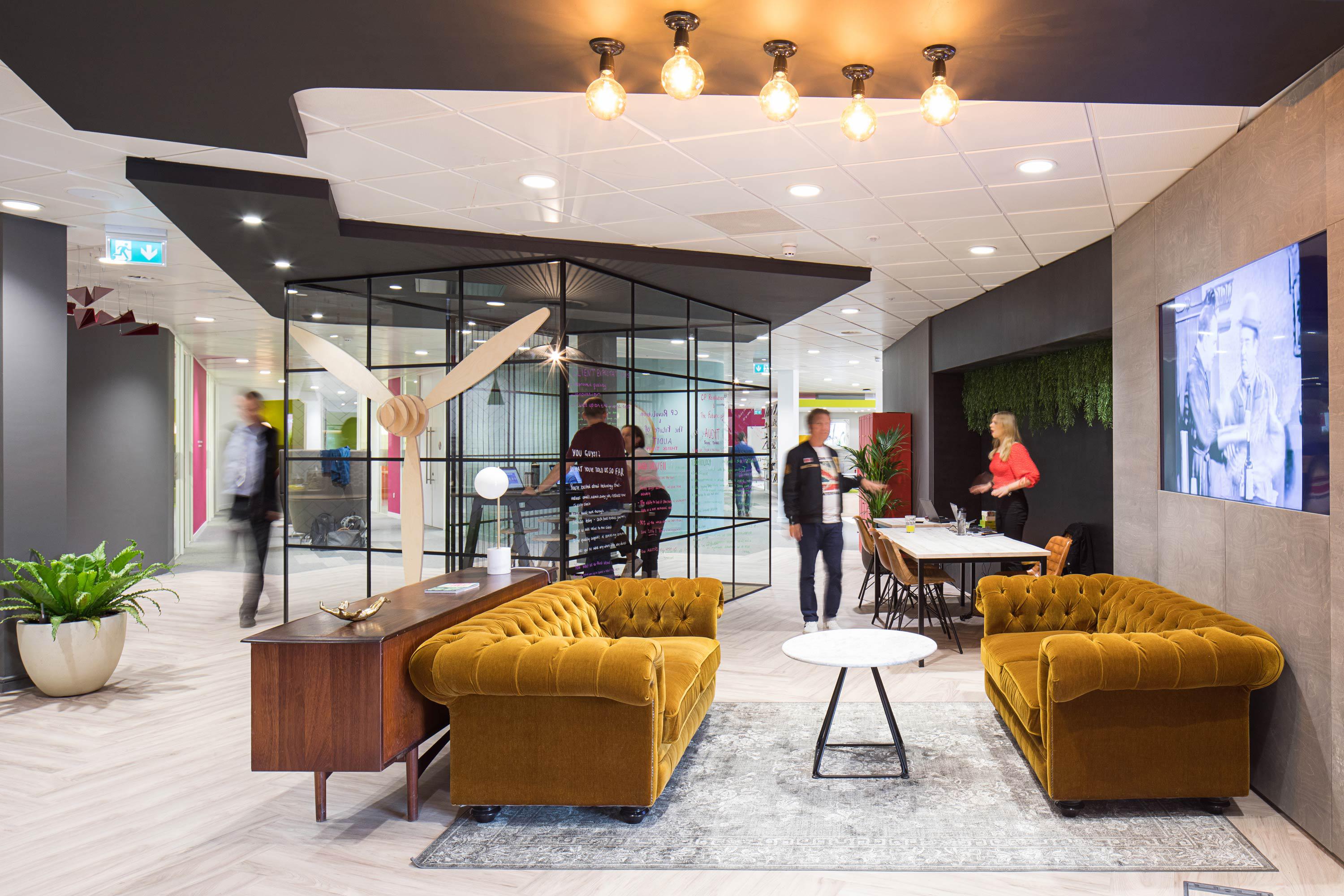
A scholarly study published in Reviews In Advance reads:
Growing organisational resources are being devoted in many contexts to work-life initiatives۪ that aim to adapt employment settings to the workforce's changing work life needs, and to respond to government regulations for fostering labor force gender integration and protecting working families.
Studies show that modern office designs are also in the best interests of businesses. Innovative and thoughtful interior workspace designs have been shown to improve overall company performance. Employees are more engaged and happier, increase productivity and reduce the number of sick days.
Experts believe the next evolutionary phase of work-life integration is to introduce work-life considerations as ongoing business practices and standard employment operational approaches.
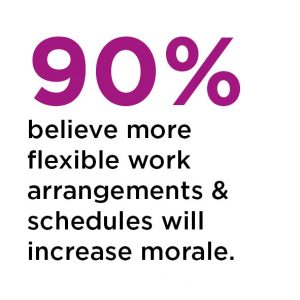
Concepts such as work-family policies۪ and employer work-life supports۪ are a common initiative for companies. However, executing the policies appropriately can be fairly complex and ambiguous.
In recent years, the introduction of telecommuting and remote working has gained traction. Since flexible working was cemented as a statutory right in the UK, the demand for flexible working has increased.
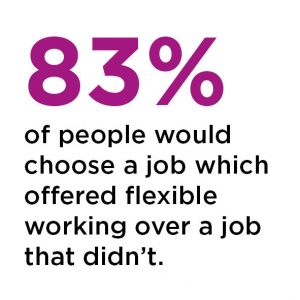
The 2019 Staples Workplace Survey reveals 90 per cent believe more flexible work arrangements and schedules will increase morale. Even more compelling for employers is that flexibility and employee retention go hand in hand. One report says 83% of people would choose a job which offered flexible working over a job that didn't.
Critics of flexible working recognise the problems of fragmenting teams. Yahoo CEO Marissa Mayer famously recalled the company۪s remote workers back to the office citing in her memo: Some of the best decisions and insights come from hallway and cafeteria discussions, meeting new people, and impromptu team meetings.
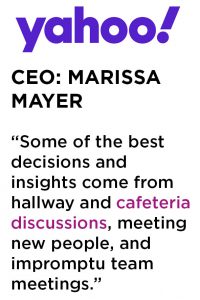
The idea of creating a workplace that encourages informal discussions is key to the fluid design trends we are seeing in modern office environments. However, today۪s workforce wants more from the workplace; they want choices.
Open-plan office designs have been met with a backlash. Employees insist they create too much noise and too many distractions. The complaint is that some open office plans are too open.
When British Telecom introduced agile working, they reported their employees were happier and healthier. At the heart of agile working is the choice to move around the office and work in areas that are specifically designed to support the activity employees are working on.
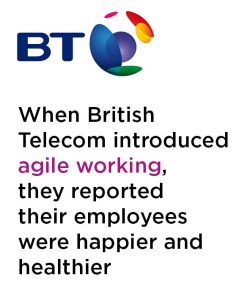
The growing trend of agile offices lends itself to the mainstream ideal of blending work with their lifestyle. Millennials, particularly, do not see the workplace as a place to go but as a thing to do.
Flexible working policies mean employees are no longer bound to 9 to 5 work schedules. Employees have the freedom to distribute their time between family, work, socialising and personal interests more evenly.
Agile office designs build into the idea of flexible working policies. Interiors are often centred around activity-based working (ABW) which helps to increase productivity and relaxation areas enable colleagues to socialise and take a break from work duties. An agile working approach places an emphasis on performance. Studies show that well designed agile offices improve collaboration, cater to workplace wellbeing, enhance job satisfaction, improve staff retention and reduce stress levels - all of which results in superior productivity.
The type of settings required for agile office designs to work effectively are large tables for projects and team meetings, soft seating and break out areas for informal meetings, brainstorming and unwinding, quiet spaces for concentrating, touchdown spaces for fleeting office visits and private rooms for formal meetings that address sensitive issues.
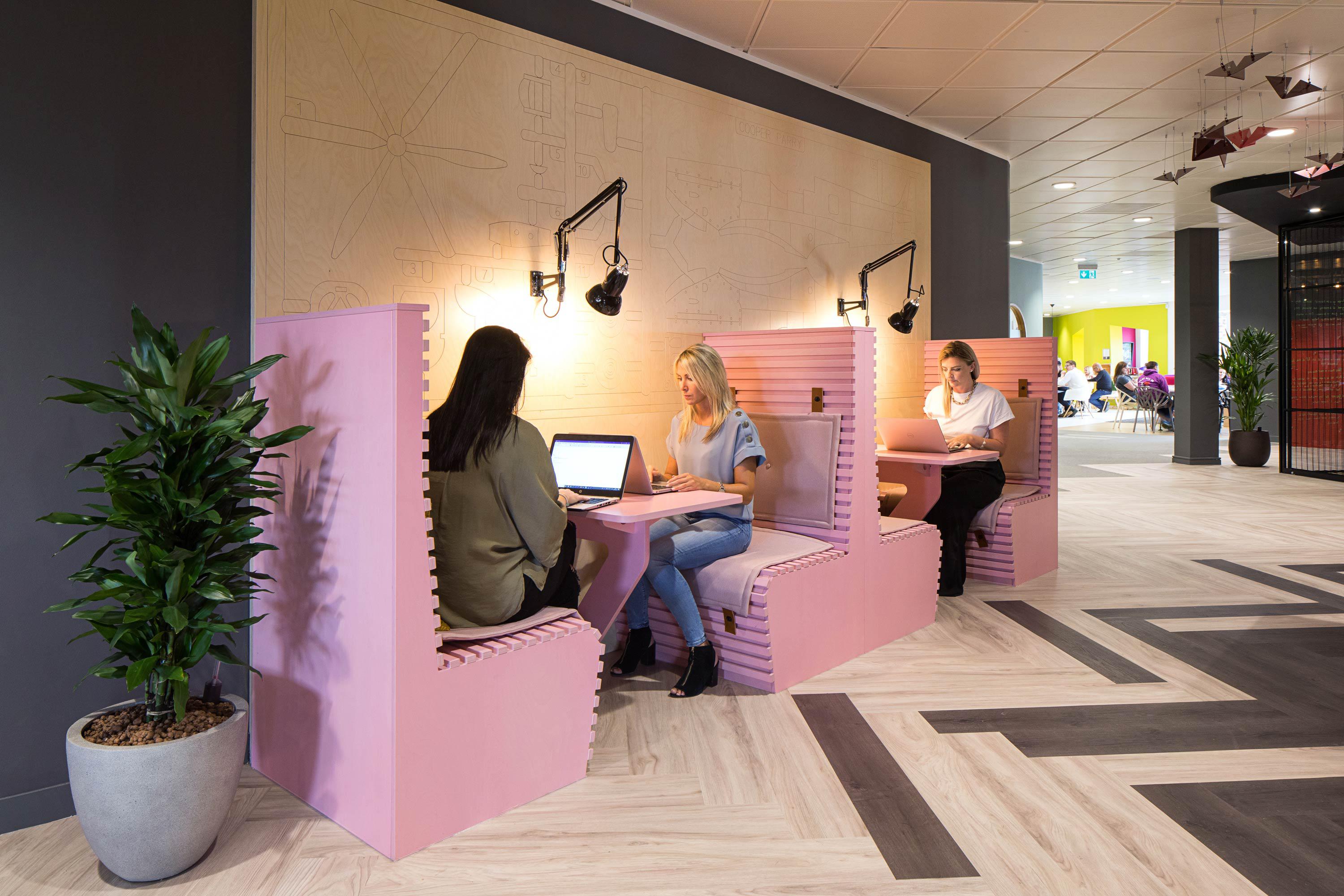
In agile office designs, employees take center stage. Rather than expecting employees to excel in any environment, the emphasis today is providing workstations that help individuals to produce optimal output.
While productivity is a priority for organisations discussing office designs, providing employees with the right technologies to boost performance should also be high on the agenda. Installing technologies, you use now and in the future is the among the first considerations we have as interior office designers.
Digital advances create a platform for employees to be the best version of themselves, both professionally and personally. Cloud-technology, wi-fi and portable devices enable workers to break away from traditional desks and access files from anywhere. These technologies are simple to implement.
We۪re now entering a phase where the latest technologies are entering the workplace; virtual reality training, augmented reality in marketing, holographic computing, voice and gesture controls all offer people more choice to experience work.
Spaces for larger groups will require visual hardware with large screens that enable longer viewing distances. Brainstorming and creative workshops will also require large surfaces with multi-touch capability and more viewable windows that will enhance teamwork.
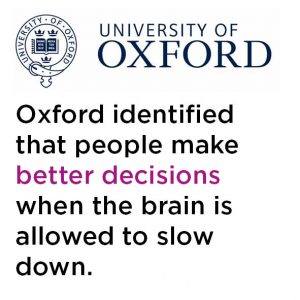
A study at Oxford University identified that people make better decisions when the brain is allowed to slow down. Working in busy environments with audible and visual distractions is not conducive to decision-making.
The slowing down aspect is a consideration business leaders should take seriously when considering how to structure the workplace. Encouraging staff to give their minds a rest is more likely to prompt inspirational and imaginative ideas.
When people rest their mind, even for a moment, ideas can emerge. These rests can be micro-breaks such as looking out the window or at a piece of inspiring art, or macro-breaks when employees seek out a change of scenery to speak with colleagues or spend some time alone to recuperate.
Researchers at the Connecticut and Indiana State Universities together with Lassel College in Newton recommend introducing formal settings to help with work-life balance.
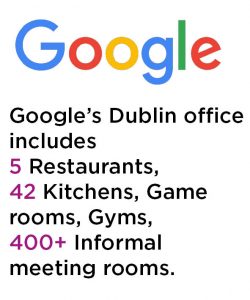
Interior office designers are reacting by installing social spaces such as work-cafes, games rooms, rejuvenation zones and meditation areas. Google۪s Dublin office, for example, includes five restaurants, 42 kitchen areas, game rooms, gyms and over 400 informal meeting rooms.
We۪re also starting to see more recreational features appear in offices such as slides, ping-pong tables, pool tables, football pitches, mini-golf courses and yoga studios. Homely domestic style kitchens and outdoor areas with park benches create familiar spaces associated with life away from work.
A survey among workers at ESCP Europe in Madrid last year revealed that some employees see agile offices as an informal but routine way of working.
Employees who do work flexibly must understand it is a privilege provided by the company and must be self-managed.
One of the biggest complaints staff have about working in a traditional office environment is noise pollution. Distraction hinders productivity and increases stress levels. Other concerns are the health risks of sedentary jobs, poor air quality, lack of natural lighting and poorly designed furniture.

Attitudes towards traditional office designs are prompting more people to work away from the office. But the reshaping of traditional working practices is also influencing how physical workspaces are changing in the office.
Business leaders are aware that today۪s workforce wants a purposeful space that enhances the activity they are performing.
Free address policies in which desks are not assigned to individuals is becoming an increasingly common theme. Employees also expect alternative spaces and soft seating areas where they can take a coffee break. Interior design tends to have an effect on how people behave. Areas that are specifically designed for non-work-related activities encourage people to take a brain-break.
Interior office designs that foster creativity, encourage playful interactions between work periods and blend non-traditional shapes and colours creates a work environment that is experienced rather than endured.Focusing on third space elements essentially involves designing areas that encourage employees to break away from their desks and standard working practices. Break-out areas not only helps to decrease noise levels but also improves health and wellbeing, both mentally and physically.
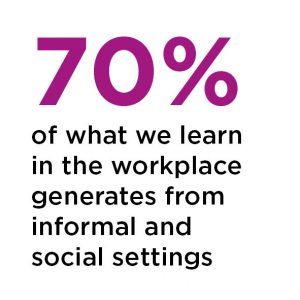
Psychologists and learning theorists understand that 70% of what we learn in the workplace generates from informal and social settings. Because people are generally more engaged in informal surroundings than a traditional classroom environment, neural pathways form more effectively and enables better memory retention.
Given we spend much of our time at work, and around 90 per cent of the time indoors, creating a working environment people want to spend their time in has short-term and long-term benefits for companies. Is it time you started thinking how to create a work-life balance for you and your colleagues?